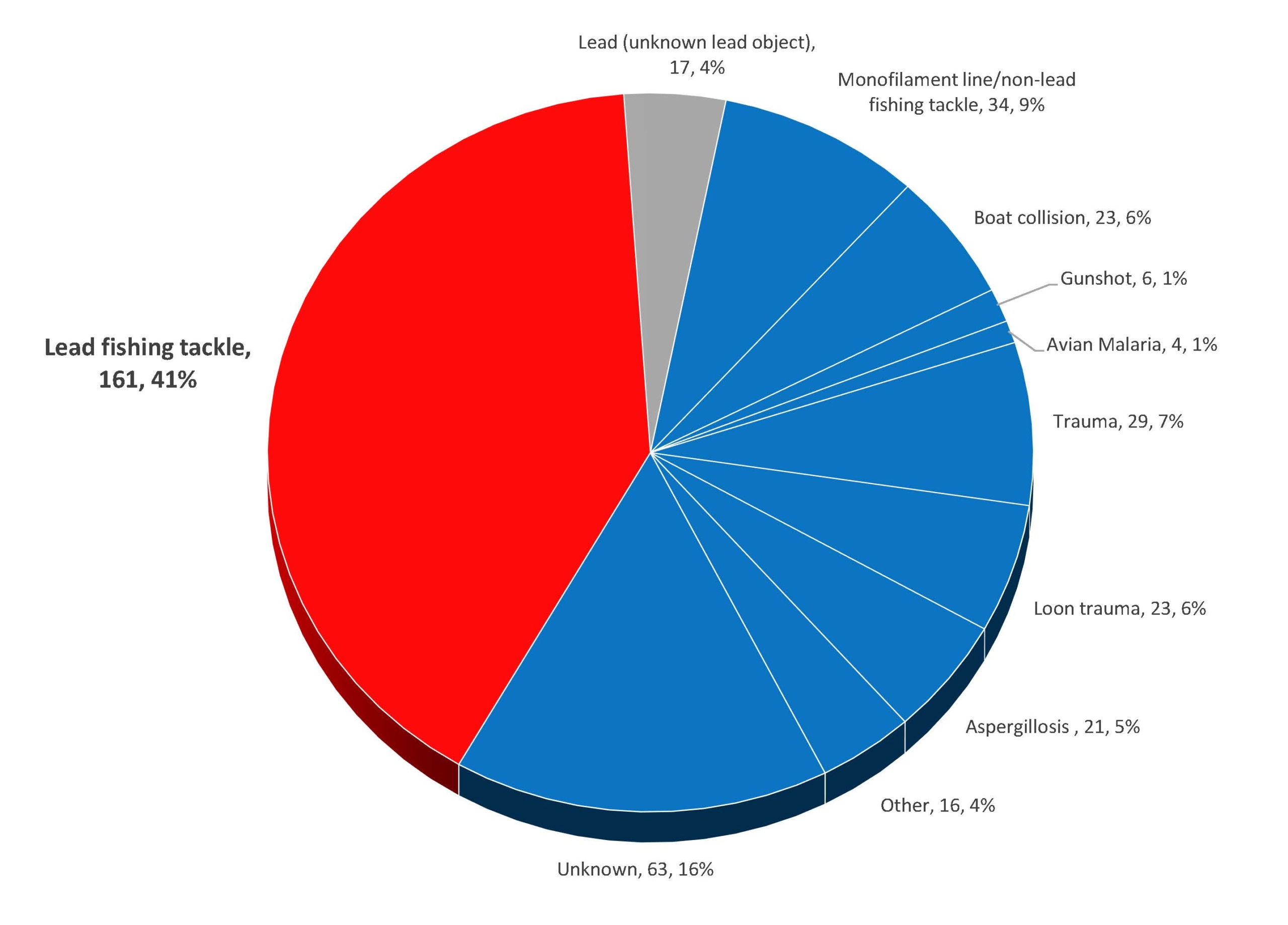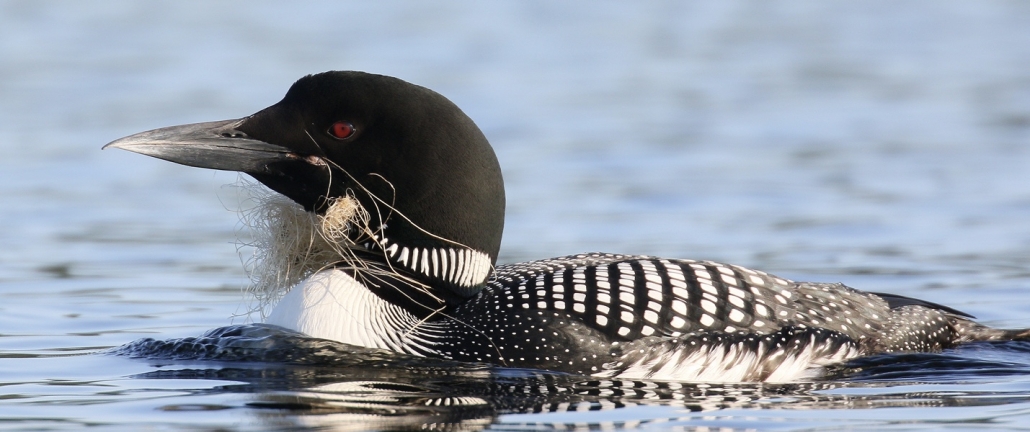Use only non-lead tackle
Lead poisoning resulting from the ingestion of lead fishing tackle is the leading cause of documented adult loon mortality in New Hampshire, accounting for over 40% of mortalities that have been documented since 1989. LPC’s data suggests that loons primarily ingest lead tackle that is in active use. Loons may consume tackle in many ways. They may catch and eat a fish that has broken an angler’s line and is trailing that line and attached tackle. Loons may also strike at an angler’s line as it is reeled in, either targeting a fish that has been caught or mistaking the motion and the glint of tackle for a fish. A loon will die with in 2–4 weeks of ingesting lead tackle. To prevent these unnecessary deaths, use only non-lead, loon safe tackle.
Reel in around loons
Loons are visual predators, and they may instinctively strike at a lure or tackle on your line if they see it moving through the water. Loons may also strike at a fish on your line. If a loon breaks your line and ends up with the line trailing from its mouth or another part of its body, there is a good chance that it will use its bill to try to remove the line. When that happens, loons typically end up with the line wrapped tightly around their bills. This effectively wires their bills shut, preventing them from eating and preening (keeping their feathers waterproofed). Loons that are tangled in this way can decline rapidly, and without intervention they may die within a few days to a few weeks. To prevent entanglement, please avoid casting towards or in the general vicinity of loons.
If you see a tangled loon, or if you accidentally hook a loon, alert the Loon Preservation Committee
Even when you are being careful, accidents can happen. If you accidentally hook a loon, or if you see a loon that is tangled, please contact the Loon Preservation Committee so that we can attempt to capture and untangle it. With early intervention, tangled loons have a good chance of making a full recovery. Loons in distress can be reported by phone at (603)476-5666 or by using our online reporting form.
If possible, please take a photo or video of the loon and submit it with your report so that we can assess the degree of entanglement.




